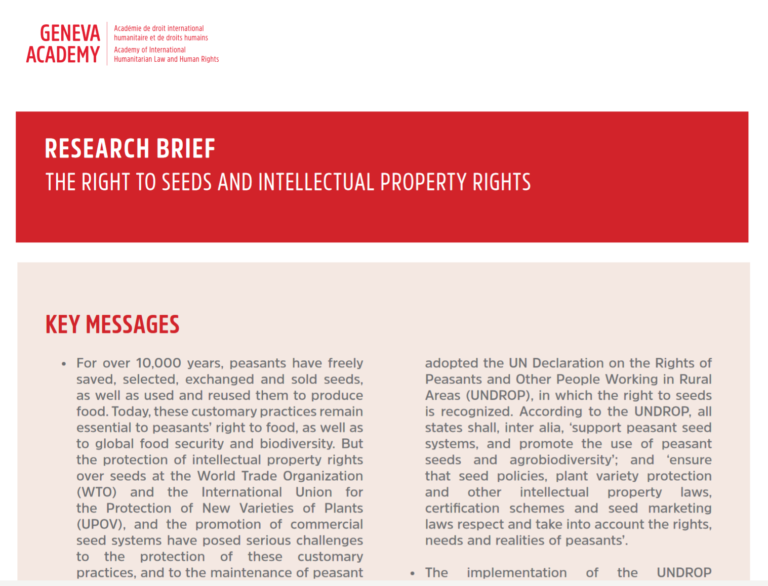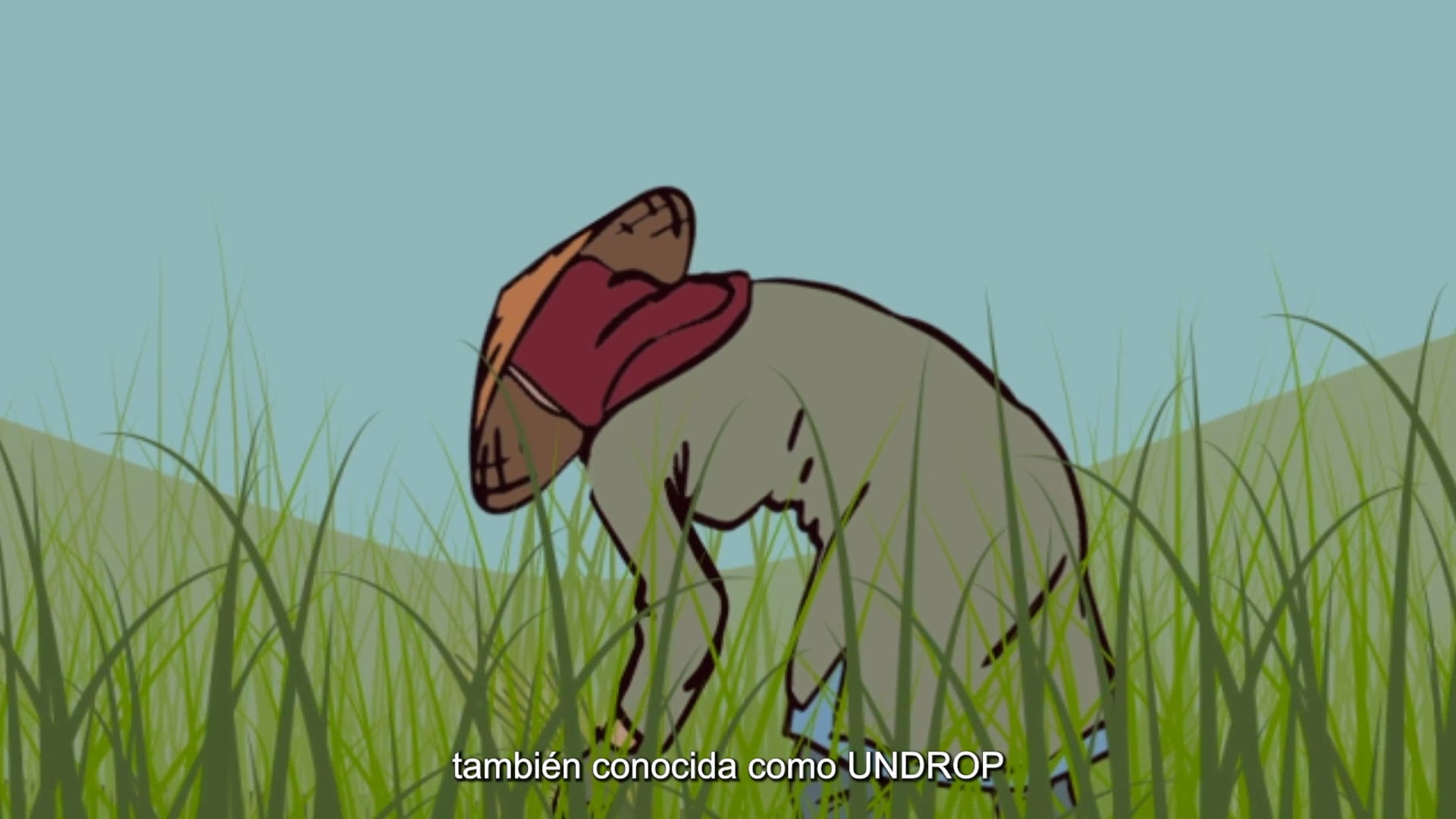
Similar Posts
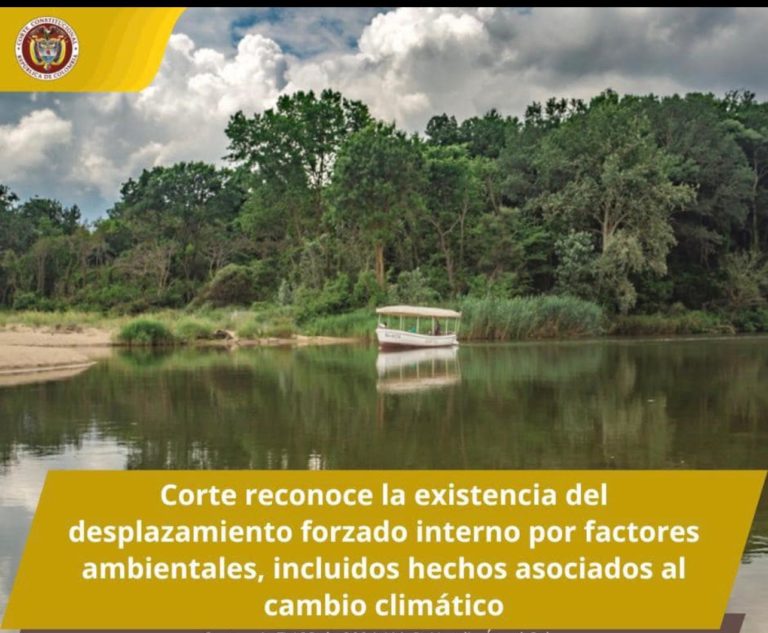
Colombia: Constitutional Court Decision Protects Peasants Displaced by Natural Disasters
In a groundbreaking decision issued on April 16, 2024 (Ruling No. T-123/24), the Colombian Constitutional Court granted protection to an elderly peasant couple forced to leave their land after repeated flooding. This ruling marks a turning point in how Colombian jurisprudence addresses internal displacement linked to natural disasters. To do so, the Court relied on…
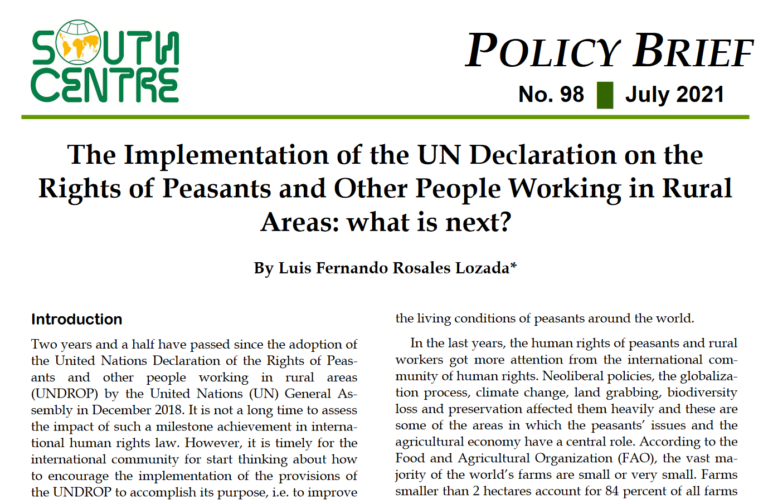
The Implementation of the UNDROP: what is next?
The UN Declaration on the Rights of Peasants and Other People Working in Rural Areas (UNDROP) was adopted in December 2018. However, its application seems challenging. On 4th June 2021, the South Centre organized a virtual meeting aiming to promote a debate about future actions to move forward the implementation of the UNDROP. The meeting…
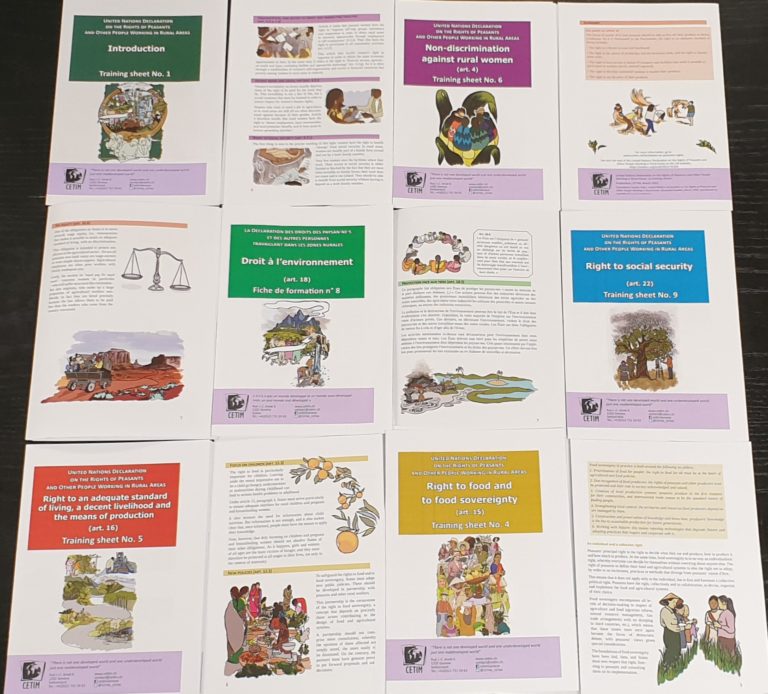
Training sheets on peasants’ rights
CETIM has published a series of training sheets to serve as support for activities and trainings in view of the implementation of the United Nations Declaration on the Rights of Peasants and Other People Working in Rural Areas (Declaration). After adopting the Declaration, we are now in a new phase: implementation. It is absolutely vital…
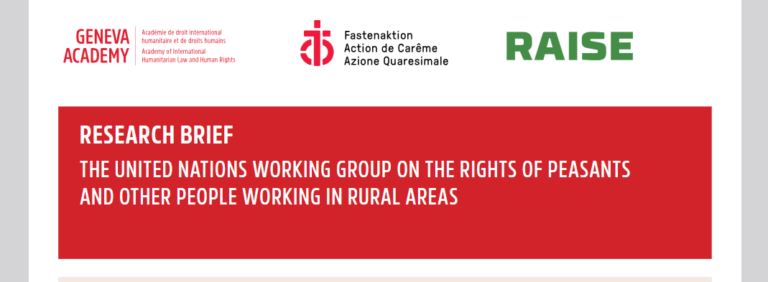
The United Nations Working Group on the Declaration on the Rights of Peasants and Other People Working in Rural Areas
Geneva Academy’s press release, 13 January 2025 We are pleased to announce the publication of a new Research Brief authored by Dr. Christophe Golay, which examines the role of the United Nations (UN) Working Group (WG) on the rights of peasants and other people working in rural areas. This Research Brief is available in English,…
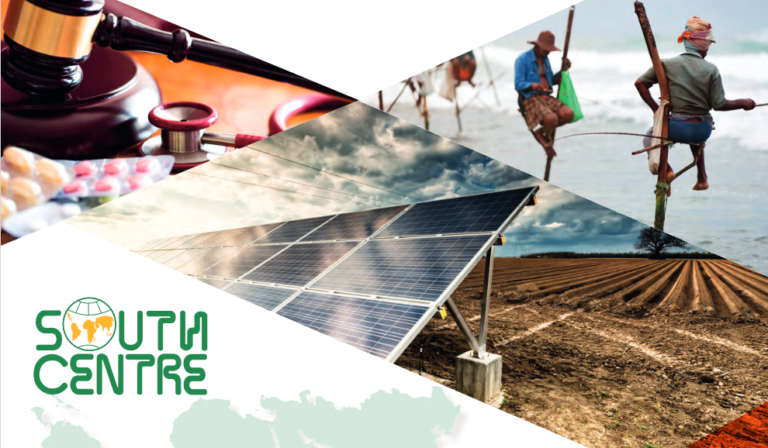
The United Nations Declaration on the Rights of Peasants and Other People Working in Rural Areas: One Step Forward in the Promotion of Human Rights for the Most Vulnerable
This article is a Research Paper from the South Center, it was first published in November 2020. In this paper the two authors, who were key actors of the adoption of UNDROP, explain how the UNDROP came to be, some of the rights enshrined in it and finally they open perspectives for the future. There…

